You’ve heard of Lord Shri Ram, the righteous and steadfast hero of the epic Ramayana. Have you ever wondered where the legendary king Rama, the epitome of righteousness in Hinduism, came from? His story isn’t just one of a fearless warrior from Hindu Mythology. The fascinating genealogy is woven into the fabric of an ancient dynasty, stretching back to the very origins of humankind. Today, we embark on a captivating journey to uncover Shri Ram’s lineage, delving into the illustrious Ikshvaku dynasty, also known as the Suryavansh or Solar Dynasty.
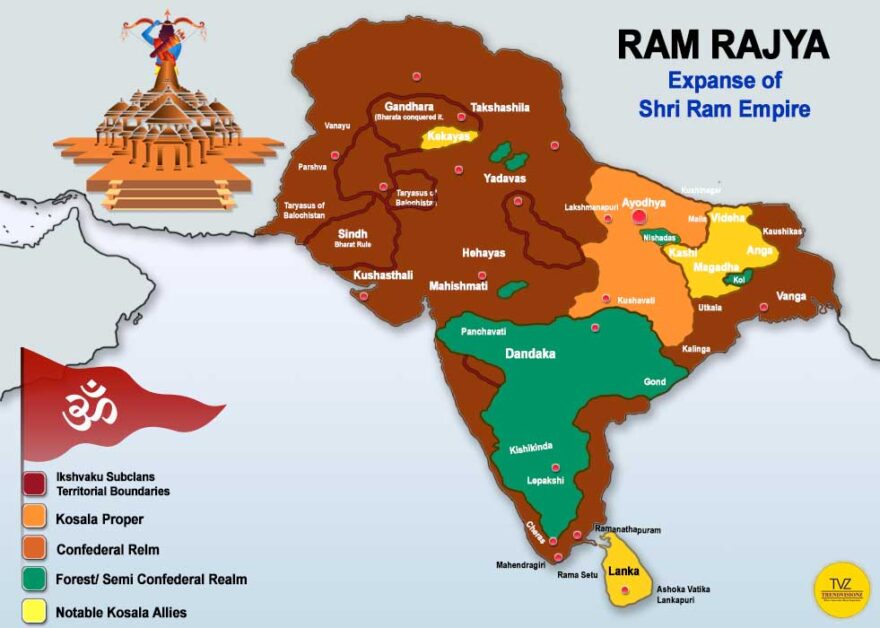
This in-depth exploration, a journey through time, will unveil the values and challenges faced by Rama’s ancestors. Advanced scientific dating methods developed in the past decades enable precise determination of ancient event dates with scientific accuracy. For as long as mountains rise and rivers flow, the epic tale of the Shri Ram will endure among humanity. Resonating through generations with its timeless wisdom and profound lessons. As an avatar of Lord Vishnu, he has been a beacon of Dharma for millennia. Get ready to unravel the rich history of the Ikshvaku dynasty and its most revered descendant, Ram Bhagwan. Hold on tight, for the spiritual journey begins now!
Also Read:
- Brew a Better World: The Secrets of Timeless Traditions
- Beyond Trends: Embracing Pioneering Sustainability in the Fashion Industry
- Beyond Horoscope 2024: Zodiac for Health, Love, & Career Growth
- Akshaya Tritiya 2024: A Spiritual Guide to the Festival
Tracing Shri Ram’s Roots: The Regal Legacy of the Solar Dynasty
Embarking on a captivating journey of fascinating genealogy of Shri Ram, the epitome of righteousness in Hinduism. Dive into the illustrious Ikshvaku dynasty’s ancestral lineage, steeped in legend and cultural significance. At the same time, the details offer a profound glimpse into the values, challenges, and triumphs that shaped Rama’s destiny. This exploration on Shri Ram transcends mere names on a family tree, revealing a rich tapestry of faith, tradition, and enduring ideals.
Echoes of Valor and Virtue
The Ikshvaku dynasty, also known as the Suryavansh or Solar Dynasty, traces its roots back to a time before recorded history. From Vaivasvata Manu, the first king and progenitor of humanity according to Hindu scriptures, emerged King Ikshvaku, establishing the Kosala kingdom and founding the dynasty. Over generations, these kings upheld Dharma, the code of righteous conduct, expanding their realm through valor and virtue.
Among them shone figures like King Raghu, renowned for his conquests and piety. His descendants, including King Dasharatha, continued the dynasty’s legacy. Paving the way for the birth of Bhagwan Ram, the seventh avatar of Lord Vishnu.
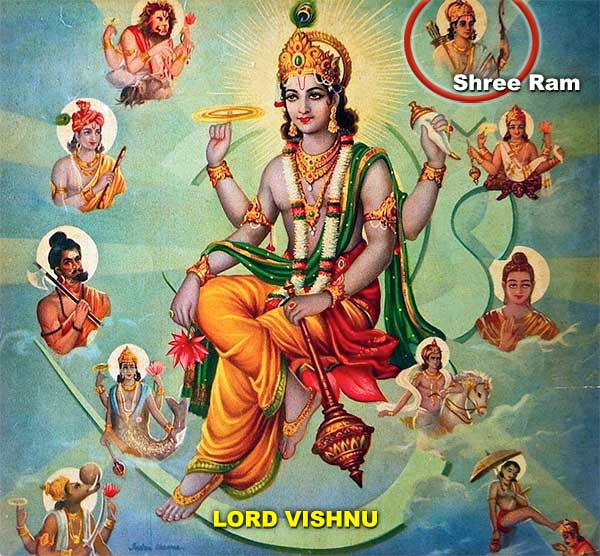
Through the Lens of Time
Witness the rise and fall of empires and the battles fought against injustice. And the unwavering adherence to Dharma that characterized the Ikshvaku dynasty. Each generation etched its mark on history. Shri Rama’s life and reign solidified the Ikshvaku dynasty as champions of Dharma. This inextricable link between Shri Ram’s divinity and royal lineage underscores ancestry’s profound influence.
Glimpsing the Dynasty’s Grandeur: A Timeline of Key Events
Journey through time with us as we unveil pivotal moments that shaped the Ikshvaku dynasty’s legacy, from its mythical origins to its historical reign.
Legendary Period:
- Before 3000 BCE, Manu Vaivasvata, the mythical progenitor of the dynasty, survives the Great Flood. His son, Ikshvaku, establishes the dynasty.
- 2700 – 2500 BCE: Reign of King Harishchandra, known for his truthfulness and purity.
- 2500 – 2300 BCE: Reign of King Sagara, famous for his attempt to reach the heavens and bring the Ganga River to Earth.
- 2300 – 2100 BCE: Reign of King Raghu, known for his conquests and prosperity.
- 2100 – 1900 BCE: Reign of King Dasharatha, father of Lord Rama.
Historical Period:
- 6th-5th centuries BCE: Establishment of the Kosala kingdom in the Ayodhya region by the Ikshvaku descendants.
- 5th century BCE: Reign of King Prasenajit, contemporary of Gautama Buddha.
- 4th century BCE: Decline of the Kosala kingdom due to internal conflicts and external invasions.
- 362 BCE: Defeat of King Sumitra by the Magadha emperor Mahapadma Nanda, marking the end of the Ikshvaku dynasty’s rule in Kosala.
Andhra Ikshvaku Period:
- 2nd-3rd centuries CE: Rise of the Andhra Ikshvaku dynasty in the Krishna-Godavari region.
- 227-250 CE: Reign of King Vasishthiputra Chamtamula, founder of the dynasty.
- 275-300 CE: Reign of King Ehuvala Chamtamula, known for his patronage of Buddhism and trade.
- 3rd-4th centuries CE: Decline of the Andhra Ikshvaku dynasty due to conflicts with other regional powers.
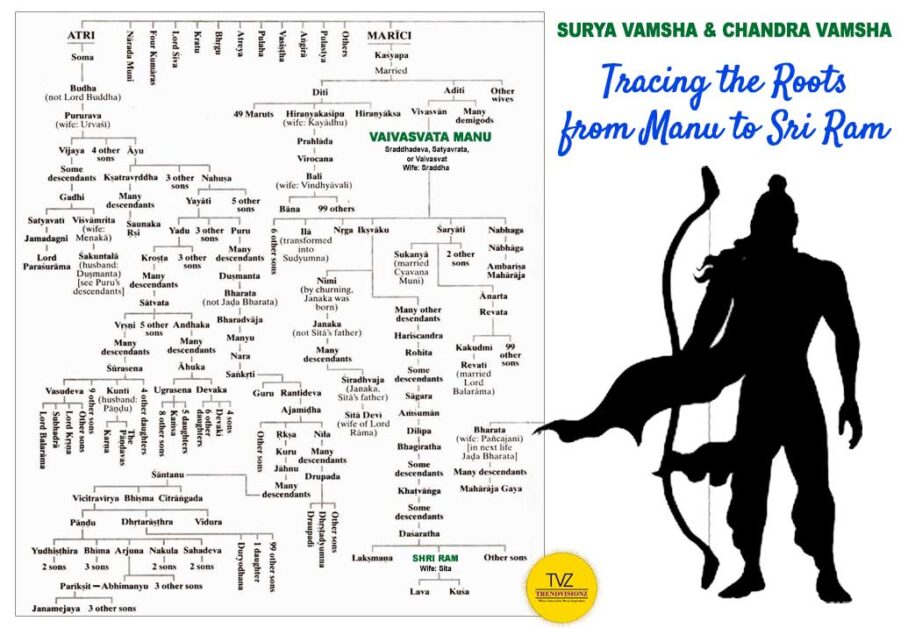
Refining the Saga: From Manu to Rama’s Lineage
Before empires rose and dynasties reigned, Vaivasvata Manu, the progenitor of humanity in Hindu scriptures, emerged as the embodiment of Dharma itself.
Manu: Legacy of Righteousness
Manu (spiritual son of Brahma) as the Earth’s inaugural ruler and humanity’s ancestor in Hindu cosmology. Svayambhuva denotes fourteen earth rulers, each leading dynasties in the universe’s renewal cycles. Manu shouldered the monumental task of repopulating the Earth after the great deluge. Manu established the bedrock of Hindu civilization. Manusmriti –Enacting laws and social order emphasizing truth, non-violence, and respect for all beings and shaping the fabric of the illustrious Ikshvaku dynasty.
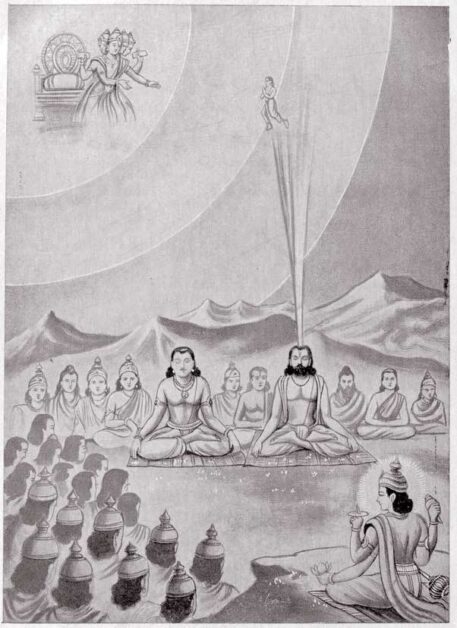
From Flood Survivor to Lawgiver
As “the lawgiver,” Manu, whose name means “man,” was his mission. Entrusted by Brahma, the creator. His influence transcended mere rule; it manifested in his lineage. Descendants like Ikshvaku and Raghu carried the torch of Dharma.
Ikshvaku: Descendants of the Sun
The Ikshvaku dynasty, also known as Suryavamsha or the Solar Dynasty, is prominent in Hindu mythology. Tracing its roots back to Manu. With Ikshvaku as its founder, this lineage was one of the two major Kshatriya lineages, Suryavamsha (Solar) and Chandravamsha ( Lunar) Dynasty. After surviving the great flood, Manu established the kingdom of Aryavarta and built the majestic city of Ayodhya on the banks of the Sarayu River (Ghaghra River). This “invincible city” served as the capital of the Kosala kingdom, ruled by the Ikshvaku dynasty.
Vaivasvata Manu: The Seventh Manu
Also known as Sraddhadeva (or satyavrata) or Vaivasvat (son of Vivasvan). Vaivasvata Manu is the seventh son of Vivasvan. He had 10 sons: Tarusa (Karusha), Prasadhra, Vasuman (Pramshu), Ila (Sudyumna), Ikshvaku, Nabhaga, Dhrsta, Saryati, Narisyanta, and Dista (Nabhanedista). Ikshvaku and Ila are regarded as the founders of the Solar and Lunar dynasties, respectively. The Mahabharata praises Manu as a noble and virtuous king devoted to Vishnu.
Lord Shri Ram: Culmination of Righteous Lineage
Lord Rama, born into this hallowed lineage as the great-grandson of Vaivasvata Manu, embodied purity and prosperity for the kingdom of Kosala.

His birth wasn’t just a historical moment, tracing his lineage to the first king and lawgiver. We find an eternal connection between Manu and the righteous Rama, his descendant. Their stories, intertwined across generations, inspire us.
Foundation of a Legacy: Notable Early Kings of the Ikshvaku Dynasty
The Ikshvaku dynasty boasts a rich history, and its early kings played a crucial role in shaping its values and traditions. Each king contributed to the dynasty’s rise to prominence. This lineage culminated in the birth of Rama. Their stories echo history and testify to the enduring power of courage, virtue, and devotion.
Vikukshi, the Valiant
Vikukshi, celebrated for his courage and unwavering devotion to Dharma, expanded the kingdom’s borders through military prowess. His name remains forever etched in legends.
Sasada, the Introspective
Son of Vikukshi, Sasada deviated from the expected path. Choosing the solitude of the forest over royal duties, his introspective nature stands in stark contrast to his father’s outward focus.
Puranjaya, the Pious
Following Sasada, Puranjaya inherited his grandfather Vikukshi’s noble spirit. Earning the title “Indravahana” for vanquishing demons alongside the divine Indra, his piety and generosity resonated throughout the realm.
Amaavasu, the Wise
Son of Puranjaya, Amaavasu was known for his profound wisdom and unwavering devotion to Vishnu. A focus on spiritual pursuits and intellectual growth marked his reign.
Khatvanga, the Brief
Khatvanga also known as King Dilipa. His reign was short-lived, ending with his demise on the battlefield. However, his legacy lived on through his courageous queen, Sudakshina
Raghu, the Conqueror
Son of King Dilīpa and Queen Sudakshina. There is a reference of Raghu as the son of Dilīpa and Dirghavahu. Raghu (57th Generation) is renowned for his conquests and unwavering faith. Following him, his descendants referred to themselves as members of the Raghuvamsha dynasty. Chronicles like the Vishnu Purana, Valmiki Ramayana, and Mahabharata detail this dynasty’s prominence. King Raghu, the illustrious founder of the Raghukula dynasty, was a man of unyielding integrity.
Raghukul rīt sada chalī āyī, prāṇ jāyī par vachan na jāyī
Raghu Dictum
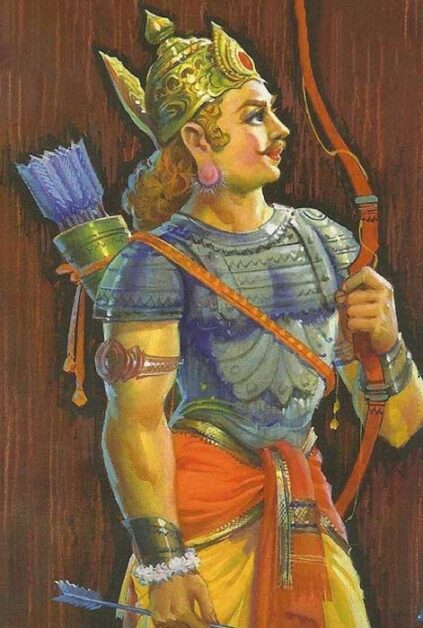
The tradition of the Raghukul clan has always been to uphold their promises, even if it means sacrificing their lives. It became synonymous with his reign, setting the standard for future generations. The poet Kalidasa expounded on his dynasty’s history in his Raghuvamsha. Raghu’s reign laid the golden foundation for his grandson, Rama‘s, illustrious era.
Aja, the Steadfast
Inheriting his father’s courage, Aja further strengthened the kingdom, creating the perfect cradle for Rama’s birth. His reign was marked by stability and prosperity, preparing the kingdom for its future glory.
Dasharatha, the Righteous
Ushering in an era of peace and prosperity, Dasharatha’s reign paved the way for the arrival of Lord Rama, the jewel of the Ikshvaku dynasty. Though his story holds complexities, his righteous rule set the stage for Rama’s reign.
The early Ikshvaku kings, though diverse, left an indelible mark on the dynasty. Their leadership, purity, and courage laid the foundation for the illustrious reign of Rama and generations to come.
Building Upon Destiny: King Dasharatha’s Legacy
King Dasharatha, a name etched in the Ikshvaku dynasty’s tapestry, embodied righteousness and duty as the noble ruler of Ayodhya. Though childless for years, his ardent prayers and sacrifices bore fruit, blessing him with four sons: Rama, Bharata, Lakshmana, and Shatrughna.
Destined for Greatness:
Among these, Rama, the eldest, shone brightest. His courage, compassion, wisdom, and unwavering devotion to Dharma made him the kingdom’s pride. Shri Ram was destined to succeed Dasharatha as Ayodhya’s future king. However, fate, driven by jealousy of the beloved queen, had other plans.
A Choice Forged in Sorrow
Queen Kaikeyi, swayed by ambition and manipulation, invoked a forgotten vow, forcing Dasharatha’s hand. Torn between his love for Shri Ram and his duty to fulfill a promise made to his queen. He was well aware of the devastating consequences either path would bring. Yet, the weight of the “Raghukul reet” lay heavy on his conscience. With a heart filled with sorrow, he adhered to his word, upholding the legacy of his lineage. He sent Rama into exile for fourteen years, Bharata taking his place as heir.
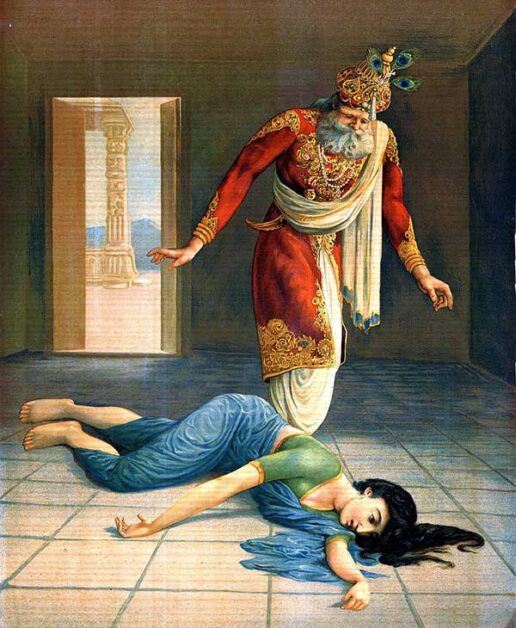
A Legacy Etched in Grief
Unable to bear the separation from his beloved son, Dasharatha succumbed to grief within days. Though his reign was tragically cut short, his legacy lived on. He had instilled in his sons the values of Dharma, courage, and devotion, paving the way for future generations.
A Stepping Stone to Rama’s Glory
King Dasharatha unwittingly became the catalyst for Rama’s rise. His son’s exile would become the defining chapter of Rama’s epic journey. Showcasing his unwavering righteousness and ultimately leading to his ascension as the embodiment of Lord Vishnu.
A Father, a King, a Divine Destiny
Though bittersweet, Dasharatha’s destiny is interlaced with a grander purpose. He stands as a poignant reminder of a devoted father and king. His choices, though heart-breaking, paved the way for Rama’s legendary reign. And the shaping of India’s spiritual landscape.
Sri Ram’s Birth: Welcoming the Seventh Avatar
Born into the illustrious Ikshvaku lineage and destined for greatness from his first breath, Shri Rama is Vishnu’s seventh avatar. Descended to Earth in the sacred city of Ayodhya—Son of King Dasharatha and Queen Kaushalya. Bhagwan Ram’s arrival heralded an era of hope and righteousness.
Lord Rama, Heir to a Legacy
Born into the illustrious Ikshvaku dynasty, a lineage descended from the Sun God Surya, Shri Rama carried the weight of generations on his shoulders. His arrival in the 81st generation marked a pivotal moment, for the dynasty had flourished for centuries. Early days of Sri Ram detailed in Ramavali by Tulsidas. His legacy extended through his sons, Luv and Kush, who continued the lineage for another 64 generations. Ensuring the dynasty’s enduring impact on the land
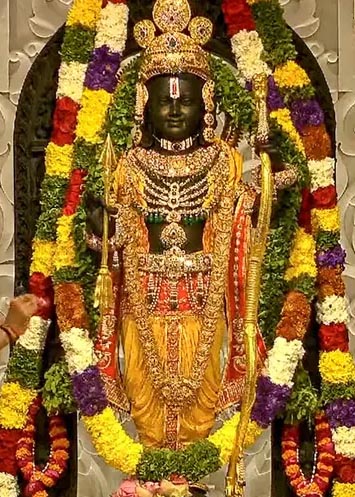
He was born to be king and heir to a glorious dynasty. Yet, fate deemed another path for Rama – one of exile, hardship, and struggle. What lessons did this unexpected turn etch upon his soul? How did these challenges forge the leader and legend we remember today? Let us embark on a journey back in time to the heart of Rama’s exile and discover the secrets of his enduring greatness.
Exiled Prince, Unyielding Dharma
Though rightful heir to the throne, fate’s cruel hand sent Rama on a 14-year exile orchestrated by his stepmother. He was accompanied by his devoted wife, Sita, and loyal brother, Lakshmana. He embraced the life of an ascetic, upholding dharma amidst hardship. The forest became his crucible, forging the righteous king he would become.
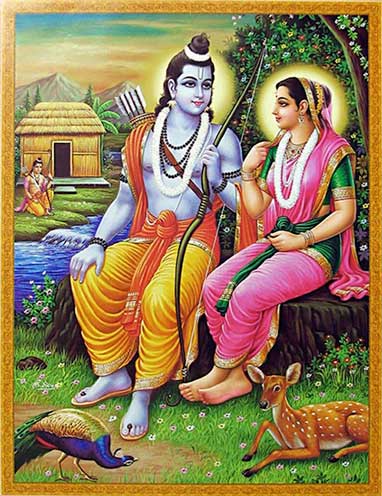
Triumph Over Evil: Ramayana’s Epic Battle
When the demon king Ravana abducted Sita, plunging the world into darkness, Rama’s true purpose unfolded. With the brave monkey army led by Hanuman by his side, he embarked on a legendary quest. The ensuing battle against Ravana resonated throughout the cosmos, culminating in Rama’s victory, symbolizing the triumph of good over evil.
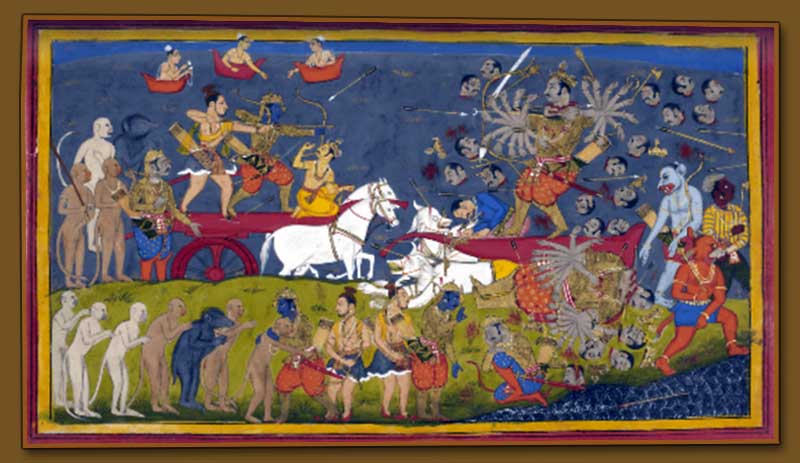
Return and Golden Reign: Ram Rajya
Reunited with Sita, Rama returned to Ayodhya, rightfully claiming his throne. His reign ushered in Ram Rajya, a golden age where peace, prosperity, and justice flourished. Guided by wisdom and compassion, Rama became the epitome of a righteous king, his reign a testament to Dharma in action.
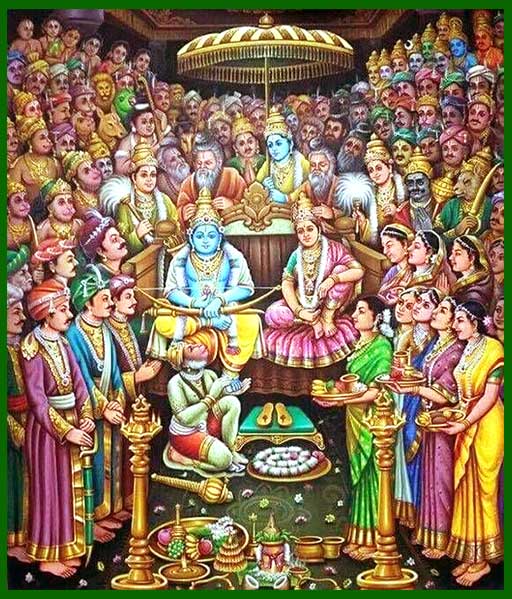
Shri Rama: Legacy of Dharma, Inspiration for Ages
Shri Rama’s life transcends a mere tale. It’s a moral compass for generations. His legacy resonates deeply within Hindu faith and philosophy, offering timeless lessons for all:
- Steadfast Devotion: His unwavering dedication to truth, duty, and righteousness exemplifies the path of Dharma.
- Courage in the Face of Adversity: Rama’s courage inspires resilience and strength in overcoming challenges from exile to facing Ravana.
- An embodiment of Ideal Leadership: His just and compassionate reign represents the qualities of a virtuous ruler.
- Celebration of Love and Fidelity: The bond between Rama and Sita signifies the power of love and faithfulness.
- Triumph Over Evil: Rama’s victory over Ravana symbolizes the universal struggle between good and evil, offering hope for overcoming darkness.
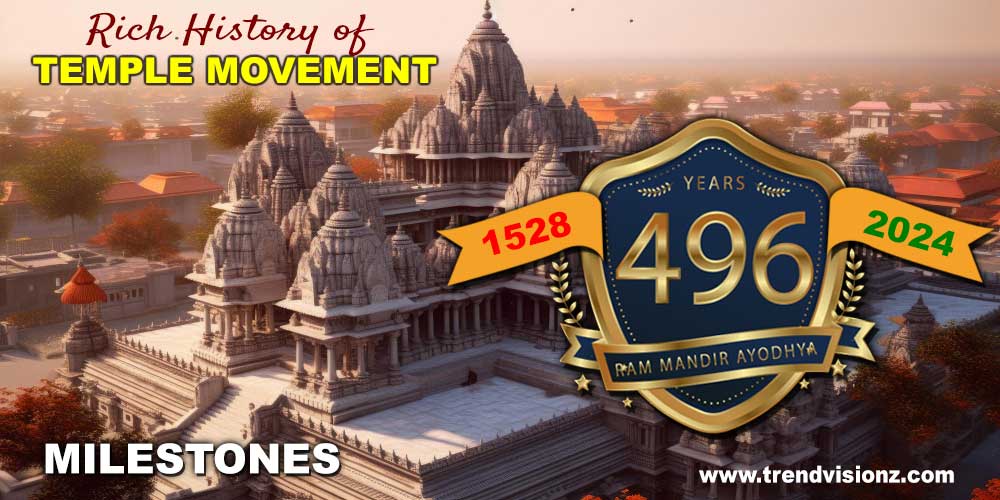
Ram Mandir Ayodhya, symbolizing 496 years of the Temple movement. This marks a new dawn for India, blending rich history with a momentous celebration.
His story inspires people today through devotional practices, artistic expressions, and philosophical interpretations. The Ramayana remains a cornerstone of Hindu culture, reminding us of the values and ideals that shape a meaningful life.
The Unsung Heroines: Powerful Women of the Ikshvaku Dynasty
Legend hails the brave kings of the Ikshvaku dynasty, but history whispers tales of remarkable women who stood beside them, shaping its legacy in equally profound ways. More than queens, they were warriors, patrons, administrators, and mothers, their stories woven with courage, wisdom, and unwavering devotion.
Sita, the Revered Goddess
Sita is revered as a Goddess. Also referred to as Siya, Janaki, and Maithili. Also the female protagonist in Ramayana, the Hindu epic. She is the spouse of the Sri Ram. She is considered a manifestation of Goddess Lakshmi. Lord Rama and Sita are inseparable as the Sun and sunshine cannot be separated.
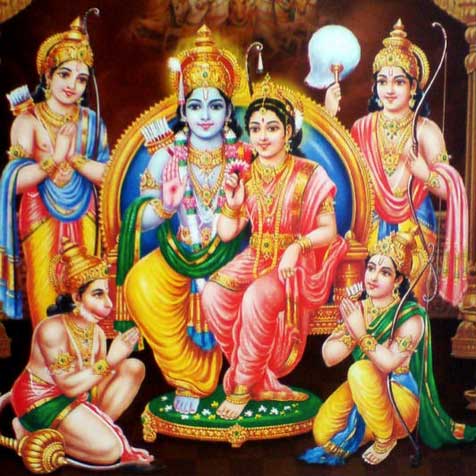
Through years of exile and hardship, Lord Rama and Sita stood by eath other side, unwavering in her loyalty and love. Sita’s intelligence and resourcefulness were crucial during the journey of Lord Rama and Sita. She used her knowledge of herbs to heal the wounded and her diplomacy to defuse tense situations. Her unwavering faith in Rama and her commitment to Dharma inspired hope and courage.
Even after being abducted by Ravana, Sita remained defiant and strong. Her eventual rescue by Hindu God Ram served as a reminder of the triumph of righteousness over evil.
Goddess Sita: Where Radiance Meets Inner Strength
Jag Janani Maa Sita
Goddess Sita is none other than Jagadambe Ma, the universe’s mother. Sita, an embodiment of unparalleled grace and divine presence, possessed the elusive charm of Asithekshana.
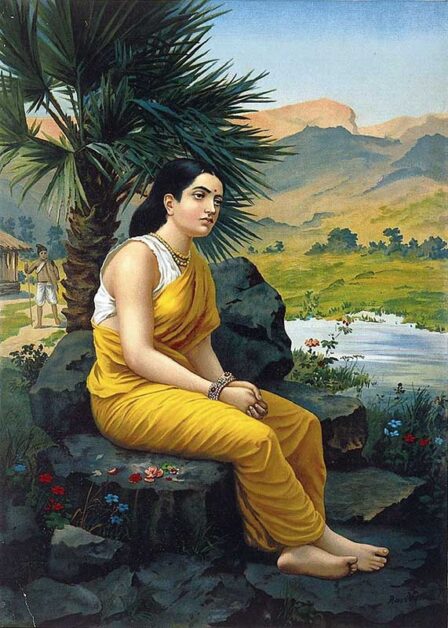
As Valmiki’s Sundarakanda describes in its 28th Sloka, she was a vision of radiant beauty. Her skin glowing like polished gold (“Kanaka varnaangi”). Her eyes resemble delicate lotus petals (“Padmapalaasakshi”). Mirrored the depth of wisdom and held the alluring charm of Manmadha’s consort, Rati. Her lips, as vibrant as the reddest pomegranate (“Bimbosthi”). She bloomed in a gentle smile, hinting at unspoken sweetness. Her hair, a cascading river of darkness, framed a face that held the captivating beauty of a goddess.
Sita, Rama’s Wife: An Exemple of Devotion and Strength in Hindu Tradition
Sita’s story as wife of Hindu God Ram continues to be revered in Hindu tradition. She is seen as an embodiment of ideal womanhood. Her courage and unwavering devotion inspire generations of women and men to stand up for what they believe in.Uttara Kand narrates Sita’s exile and the birth of Luv and Kush in Valmiki’s hermitage, showcasing her resilience and the continuation of Shri Ram’s lineage through his sons.
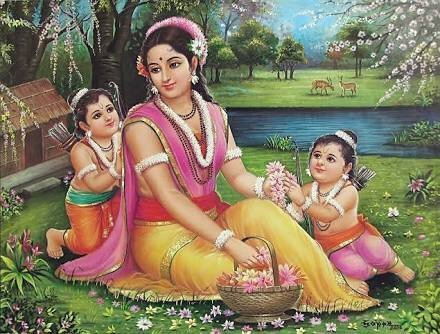
Sita as Rama’s Wife embodies an ideal of unwavering devotion and strength. The Ikshvaku dynasty thrived upon the contributions of many remarkable women. Like Sita, they stepped beyond traditional roles. Defying expectations and shaping the dynasty’s legacy in diverse ways.
Empresses of Action
- Dirghajihvi, the Victorious: When King Khatvanga fell, she led the army to victory, ensuring the lineage continued with the legendary Raghu. Her bravery cemented the dynasty’s stability.
- Bhagavata, the Builder: Not just a queen, inscriptions reveal her as the “Mahasenapatim,” suggesting a high administrative role. She may have even managed the royal harem, showcasing her multifaceted contributions.
Pillars of Faith
- Kausalya, the Pious: Known for her unwavering love and adherence to Dharma, she raised Rama as the epitome of righteousness. Her steadfast support guided him through exile and reign.
- Sumitra, the Nurturing Soul: Despite being the second wife, she raised Lakshmana and Shatrughna with equal love, instilling their unwavering loyalty to Rama. Her maternal strength anchored the family.
Patrons of Progress
- Queens and princesses left their mark on Buddhism: Inscriptions depict their patronage of monuments at Nagarjunakonda, showcasing intricate artwork and their dedication to spiritual growth.
Beyond Titles and Roles
These women transcended their positions. They actively shaped the dynasty’s political, cultural, and religious landscape. Their stories remind us that true power lies not just in titles but in the courage, wisdom, and compassion one wields.
Echoes of Inspiration
The legacy of these Ikshvaku women reverberates through the ages. They challenged expectations, defied norms, and carved their unique paths. Their stories inspire women to break barriers, lead with integrity, and leave their mark on the world.
From Kosala to Kashi: Tracing the Ikshvaku Dynasty’s Geographical Journey
Deep within the heart of ancient Ayodhya, a city nestled in the fertile plains of Kosala. There lies a legacy of Ram Bhagwan intertwined with faith and history: the legend of Bhagwan Ram. His story, echoing across generations and regions, transcends mere words. A saga captivating audiences through the vibrant pulse of performing arts. From the elaborately adorned stages of Thailand to the ancient temples of Cambodia, and beyond. This iconic narrative continues to enthrall and inspire, weaving its way into the very fabric of Southeast Asian culture.
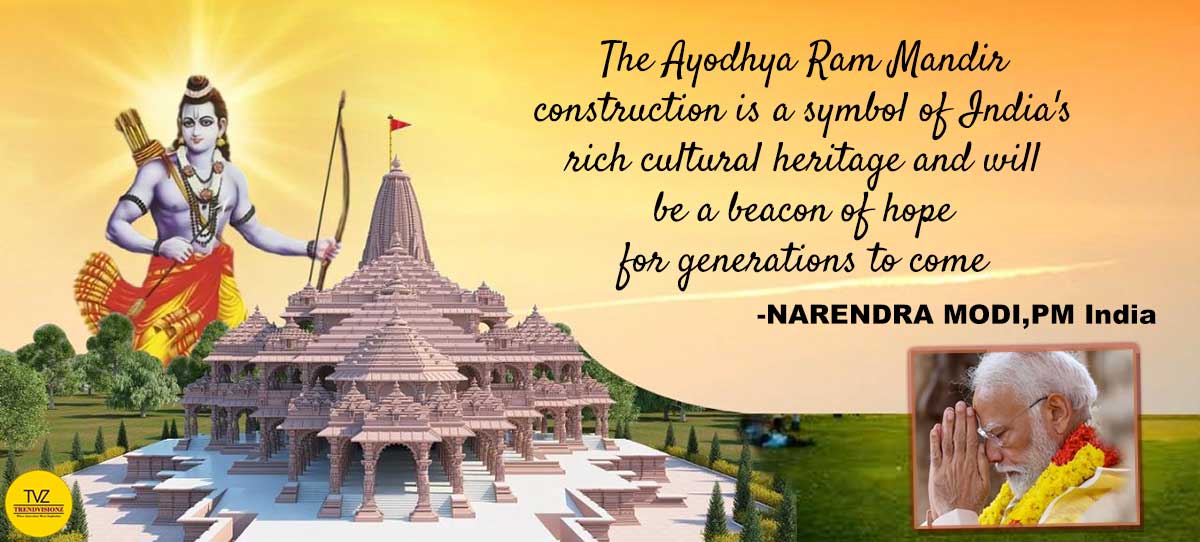
The Global Influence of Shri Ram
- In Thailand, the Ramayana is revered as the Ramakien and holds the status of a national epic. The ancient capital of Thailand was named Ayutthaya, reflecting its connection to the Ramayana.
- Burma has its rendition of the Ramayana known as ‘Yamayana’. In Burmese culture, Rama is referred to as ‘Yama’ and Sita as ‘Me Thida’.
- The Malay version of the Hindu epic is known as Hikayat Seri Rama. Demonstrating the widespread influence of the Ramayana across Southeast Asia.
The lineage flourished, and their influence expanded beyond Kosala. Encompassing prominent cities like Kashi, a vibrant center of learning and pilgrimage. And Mithila, the legendary kingdom of Sita from the Ramayana.
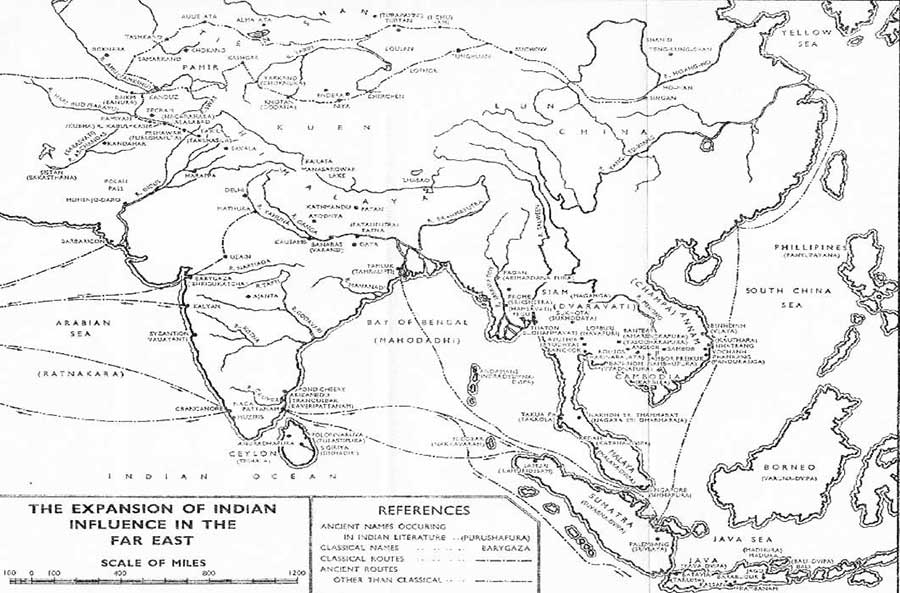
Their reach extended north to strategically essential regions like Magadha, laying the foundation for future expansion. Under powerful kings like Dasharatha, the kingdom stretched from the snow-capped peaks of the Himalayas to the Vindhya mountains. Marking a period of significant territorial expansion. Ayodhya’s importance as the dynasty’s birthplace never diminished.
Shaping Cultures: Art and Values
Their cultural contributions transcended geographical boundaries. Grand temples like those at Nagarjunakonda showcased their architectural prowess and religious devotion. The epic Ramayana, attributed to their lineage, continues to shape cultural values and storytelling traditions. These artistic expressions instilled virtues like righteousness, filial piety, and devotion, shaping the social fabric of ancient India.
Beyond Kings: Queens, Scholars: Lasting Impact
While figures like Rama hold prominence, acknowledge the equally significant contributions of queens, administrators, and scholars who shaped the dynasty’s cultural and political landscape. Recognizing their roles paints a more comprehensive picture.
Legacy: Etched in Stone and Story
Even after their reign, the dynasty’s impact resonated deeply. Their emphasis on Dharma, justice, and compassion became cornerstones of Hindu mythology and social structures. Figures like Lord Rama and Sita remain archetypes of ideal conduct. This enduring legacy lives on in architecture, festivals, and customs. Reminding us that true power often lies in the values and stories that continue to inspire.
Key Achievements
- Patronage of monumental architecture like temples at Nagarjunakonda.
- Composition of the epic Ramayana, shaping cultural values and storytelling.
- Emphasis on Dharma, justice, and compassion, influencing social structures and mythology.
- Integration of local traditions, fostering cultural exchange, and enriching the tapestry of ancient India.
- Contribution to the development and spread of Hinduism and Buddhism.
- The lasting impact on language and literature through Sanskrit, the language of their epics.
This enduring legacy transcends mere historical facts. It’s a testament to the dynasty’s enduring cultural influence, reminding us that true power often lies not just in titles and territories but in the values, contributions, and stories that continue to resonate through time.
Myths and Legends of the Ikshvaku Dynasty
Our journey through the Ikshvaku Dynasty has traversed historical accounts and scholarly insights. Now, we delve into captivating legends and mythologies. Enriching our understanding with fantastical tales woven into the dynasty’s tapestry. Let these stories be passed down through generations. Illuminate the grandeur and enduring legacy of the Ikshvaku lineage.
The Name “Bharat”
Legend traces the lineage of the Solar Dynasty back to Ikshvaku, named after his encounter with a sage. His son, Bharata, not only initiated the dynasty’s reign but also gave his name to our nation, according to legend. Interestingly, India’s astrological chart aligns with the zodiac sign of Taurus. Symbolizing the dynasty’s enduring significance.
Jain Connection
Jainism honors Rishabhanatha as the first Tirthankara. And legend connects him to King Ikshvaku. The dynasty’s name itself is linked to Rishabhanatha. According to legend, a Rishi rescued him by giving him Ikshu Rasa, or sugar cane juice. His voice became melodic, earning him the name Ikshvaku, which means “Speaking sweet.” Notably, the lineage gave rise to 21 Jain Tirthankaras, signifying its significant influence within Jainism.
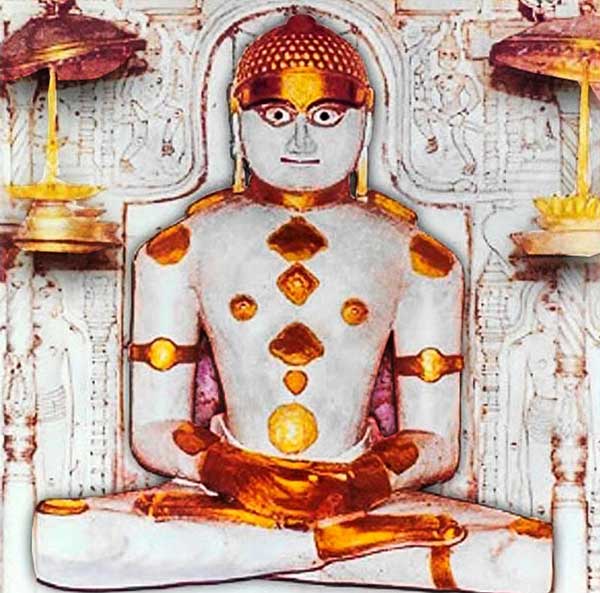
Buddhist Connection
Adding to the dynasty’s spiritual diversity, legend, and Buddhist literature suggest that the 139th Buddha belonged to this lineage. This connection enriches the Ikshvaku Dynasty’s legacy within the Buddhist tradition.
South Korean Ties
A fascinating legend suggests a connection between the dynasty and South Korea. It tells the tale of a Princess Suriratna from Ayodhya who sailed to Korea and married King Kim Suro (Gayo Kingdom) over 2,000 years ago. Millions of Koreans consider themselves descendants and Ayodhya their maternal home, fostering cultural exchange through visits and memorials.
Divine Farewell: Lord Ram’s Ascent to Heaven
Various ancient texts, including Vishnu Puran and Manu Smriti, state that Sri Rama ruled for 11,000 years. This exceptional length of reign is often interpreted as a symbolic representation.
Lord Ram, ever dutiful, faced a heart-wrenching dilemma. As per Mahakal’s decree, none could witness his divine departure. Yet, Lakshman, ever vigilant, unknowingly interrupted it. Agonized, Ram chose not to punish but to sever earthly ties. A decision akin to death for the devoted brother. Lakshman, unable to bear the separation, embraced the river’s embrace.
With a heavy heart, Ram divided his kingdom and sought Vashishta‘s counsel. Guided by the sage’s blessing, Ram and his faithful followers embarked on a final journey. Together, they entered the sacred waters, their earthly forms dissolving into heavenly light. Marking the triumphant return of a celestial king.
End of the Dynasty
The Kosala kingdom weakened after King Prasenjit’s reign. Subsequently, Emperor Mahapadma Nanda of Magadha conquered the last known king, Sumitra, in 362 BCE, marking the end of the dynasty’s rule.
The myths and legends of the Ikshvaku Dynasty offer a glimpse into the rich cultural heritage of India. They showcase the dynasty’s diverse connections, spiritual significance, and lasting impact on the land. These legends continue to inspire and fascinate people to this day.
Also Read:
- Fashion Trends 2024: The Latest Trends Shaping Our Wardrobe
- Beyond Horoscope 2024: Zodiac for Health, Love, & Career Growth
- 7 Proven Skills to Help You Cope with Stress Successfully
FAQs: Tracing the Lineage of Shri Ram
What does “Ramayana” signify?
“Ramayana” means “Rama+Ayan.” “AYAN” refers to a path, symbolizing Ram’s life, ideals, strength, struggle, and justice. The great epic was titled “Ramayana” by Maharshi Valmiki. Ramayana is Rama’s way of life, leading to his recognition as “Maryada Purshottam RAM.”
Where was Lord Rama born?
Lord Rama was born in Ayodhya, the ancient capital of Kosala. His birth commemorates Chaitra Shukla Navami as Shriram Navami. The Ram Mandir Ayodhya honors this sacred site, revered by Hindus worldwide.
Why is Sita considered the ideal woman in Hinduism?
As Rama’s wife, Sita embodied purity, loyalty, and virtue. Despite facing immense hardships, she never wavered in her devotion to Rama. Sita is revered as the perfect woman, honoring her Dharma above all else. Her dedication and sacrifice serve as a model for Hindu women.
Conclusion
So there you have it, the fascinating genealogy that leads us to Rama. Tracing back to Manu himself. Our exploration of Shri Ram’s lineage has delved into the depths of history, illuminating the rich tapestry of the Ikshvaku dynasty, also known as the Suryavansh or Solar Dynasty. From the legendary King Manu Vaivasvata, considered the progenitor of humanity, to the brave kings who shaped the dynasty’s legacy, we have witnessed their triumphs and tribulations.
Shri Ram, the embodiment of righteousness and a beacon of hope in Hindu mythology is at the heart of this narrative. Each is etching their mark on history; his ancestors laid the foundation for his exceptional reign, remembered as Ram Rajya, a golden era of peace and prosperity.
Beyond historical records, we ventured into the captivating realm of myths and legends, uncovering fascinating tales like the origin of the name “Bharat” and the intriguing connection to South Korea. These stories enrich our understanding of the dynasty’s diverse cultural influence and enduring legacy.
Share your Review
Our Digital Imprints:
Anuj Mahajan is a Mass Communication Specialist,
ICF Certified Coach & Corporate Trainer. Motivational Speaker / NLP Lifecoach.
Chief Operating Officer: Nuteq Entertainment Pvt Ltd, and
Co-Founder: Trendvisionz – A Premier Digital Marketing Agency in India
Get Connected to us with our Newsletters-Transforming Lives… Creating the magic. Just – Believe ~ Practice ~ PerformBizTech Chronicle… Navigating Tomorrow’s Tech Frontiers 🚀
Join my LinkedIn Group: Digital Marketing, Content Creation World Group
Follow me on Twitter or LinkedIn. Check out my website.
References:
- “Raghu: 20 definitions”. www.wisdomlib.org. 24 June 2012. Retrieved 22 October 2022.
- Debroy, Bibek (25 October 2017). The Valmiki Ramayana, Volume 3. Penguin Random House India Private Limited. ISBN 9789387326286.
- “Valmiki Ramayana – Ayodhya Kanda – Sarga 34”.
- Book- The Hindu history. Rupa Publications India.by A.K.Mazumdar 2008, p. 161.
- Sanskrit Documents, Raghuvamsha text, Sarga (Chapter)05 https://sanskritdocuments.org/sites/giirvaani/giirvaani/rv/sargas/05_rv.htm
- Kālidāsa (2003). Raghuvaṁśa of Kālidāsa. Chaukhamba Sanskrit Pratishthan. p. 183.
- “Karnali River: Longest River of Nepal « Wildlife in West Nepal”. Archived from the original on 20 January 2008.
- Man Mohan Sharma, 1986, The Mystery of Rupkund, Page 111.
- Jain, Kailash Chand (1991), Lord Mahavira and his times, Delhi: Motilal Banarsidass, ISBN 978-81-208-0805-8
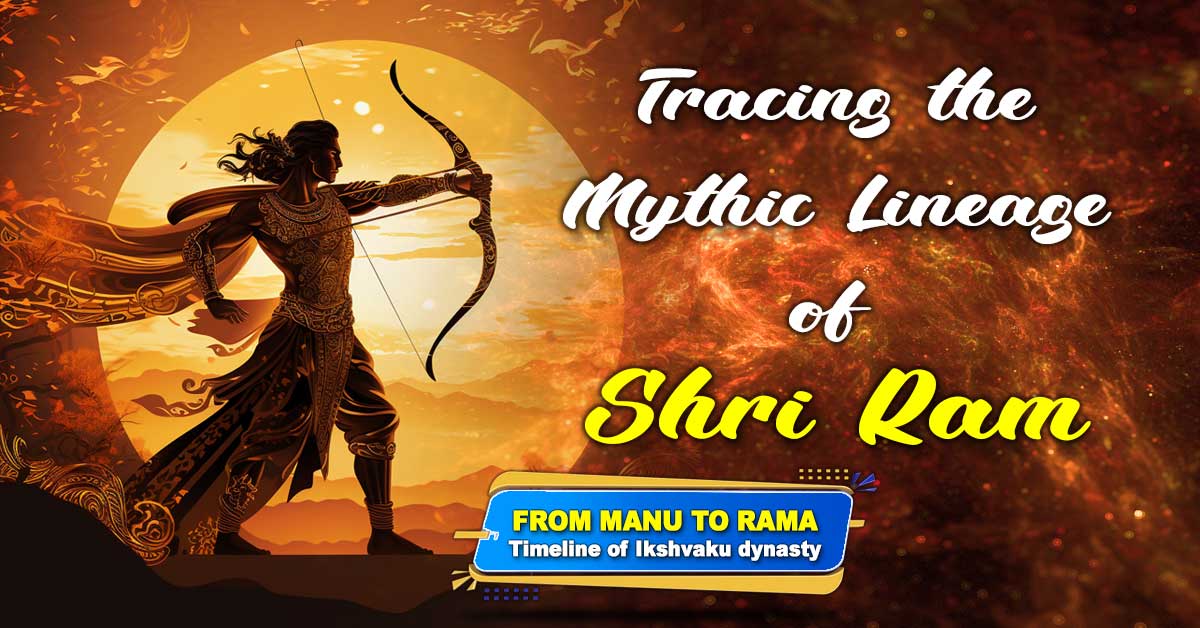


2 comments
Very exhaustive and detailed information indeed…grt job done!!!!
thank you so much
Comments are closed.